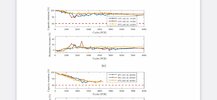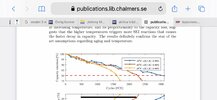Thanks for that!
So if I'm understanding that chart correctly, The 'best' option for minimising battery degradation out of the 4 scenarios I proposed is likely to be #1 (daily charge from 60% to 80%).
No, thats not right!
Its easy to draw the wrong conclusions when only reading one research report.
The results are very depending on which cycling schedule that is chosen.
From a lot of research reports we can be sure that these things are facts:
- Calendar aging might degrade the battery as much or more as cyclic aging. Most cars is used a few ours per day, during most of the rest of the day the battery is aged by time.
- The lower the SOC, the lower the calendar aging is. No exceptions as long as not below 0% SOC on the battery meter.
- Lower temps is god for calendar aging. When the battery is in use, 20-25C is goo
- The smaller the cycle( depth of discharge) the lower the degradation is.
- The lower the cycle is( ie the charging target) the lower the degradation is.
So, charge every day, not each other.
Use as low charging target as possible. Charge to 50% and arrive with 30% is better than charging to 60 or 70% and arrive with 40 or 50%.
Set the charge to start so the charging is done a relatively short time before starting to drive. If done so, the battery is at a lower SOC for most of the day.
I have a ‘21 M3P( Freemont, pana 82kWh).
I charge to 55-57% daily, use about 20-25% each day commuting to work. Charging is set( 11kW) to commence so it is ready about 1 hour before I go for work.
After 9 months and 23000km I still have full range om the battery meter and teslafi shows the same. The Nominal Full Pack value( via Scan my Tesla) is the same as when the car was new. Of course there should be a slight degradation but it is not seen by the BMS yet.
I have read, and have at least 30 research reports. A lot of reading, but this information sum up the things valid for Teslas/panasonic NCA cells:
How to preserve the battery
My plan seem to work:
Degradation from time( “calendar aging”) on panasonic NCA:
(Lesson learned: keep SOC low, and if possible battery from high temps during long time. High SOC together with high temps is not the best).
The difference between deep and shallow cycling. Lessons learned: shallow cycles at low SOC is better.






